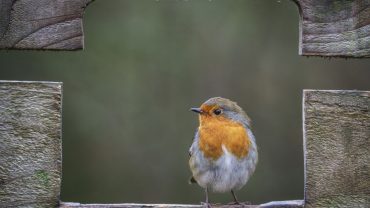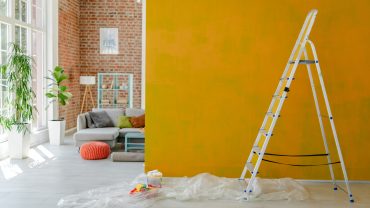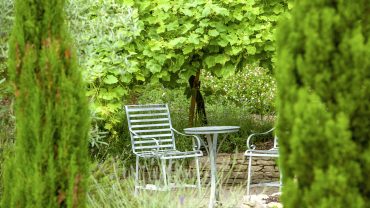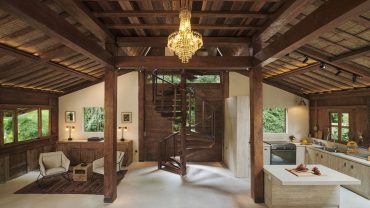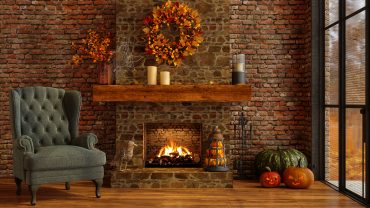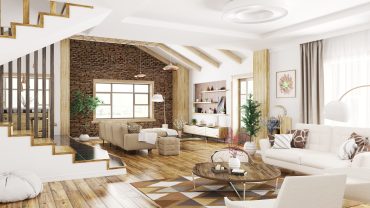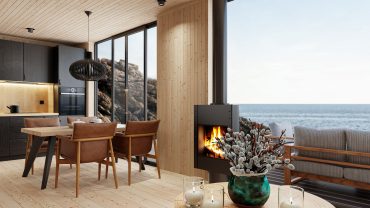The Spanish colonisation of the Americas, which began in the late 15th century, left a lasting and far-reaching impact on the region. This influence is evident not only in the languages and cultures of the Americas but also in its architectural and interior design traditions. Spanish colonial architecture, characterised by its distinctive blend of European and indigenous elements, became a defining feature of the built environment in the Americas.
As the centuries passed, the early 20th century witnessed a resurgence of interest in these architectural forms, leading to the emergence of Spanish Revival interior design. But what defines this style? How do the ornate details of the past blend with contemporary design to create modern Spanish Colonial interiors? Let’s find out.
A History of Spanish Revival Interior Design

Spanish Colonial interior design (Credit: Andreas von Einsiedel via Getty Images)
Spanish Revival interior design, also often known as modern Spanish colonial interior design, emerged in the United States in the early 1900s. Its popularity soared after the Panama-California Exposition of 1915 in San Diego, where architect Bertram Goodhue’s work brought national attention to the style. The exposition showcased the romantic and picturesque qualities of Spanish colonial architecture, emphasising elements such as white stucco walls, terracotta roofs, and arched doorways. These architectural features quickly found their way into the interior spaces of homes, where they were complemented by rich textures, earthy tones, and handcrafted details. The style’s peak popularity occurred between 1915 and 1931, particularly in regions like California and Florida, where the climate and landscape harmonised perfectly with the aesthetic.
Key Characteristics of Modern Spanish Colonial Interior Design

Stunning hand-painted wall tiles (Credit: Simon McGill via Getty Images)
Spanish Revival interiors are distinguished by their use of natural materials, ornate detailing, and a warm colour palette. These spaces often feature elements such as exposed wooden beams, terra cotta floors, and plaster walls, which are reminiscent of traditional Spanish Colonial homes.
Earthy Colour Palette & Natural Materials
Spanish Revival decor is renowned for its use of warm, earthy tones. The colour palette often includes shades of terracotta, brown, deep greens, and muted yellows – colours that evoke the natural landscapes of Spain and the Mediterranean. Natural materials also play a significant role in Spanish Revival interiors, with plenty of wood, stone, and wrought iron throughout the space. Wooden beams, often dark and exposed, add warmth and character, while stone and ironwork bring in a rustic, handcrafted quality.
Textured Walls & Patterned Tiles
Textured walls are a staple in modern Spanish Revival interiors. Techniques such as lime wash or plaster are commonly used to add depth and interest to the walls, creating a subtle yet impactful backdrop. These textures often complement the intricate patterns found in Spanish Revival decor, particularly in the use of tiles. Colourful, hand-painted tiles are a hallmark of this style, adorning everything from floors to backsplashes to stair risers. The intricate patterns and vibrant colours of these tiles introduce a sense of artistry and tradition, making them a focal point in any room.
Arches & Curved Lines
One of the most distinctive features of Spanish Revival interior design is the use of arches and curved lines. These architectural elements are often seen in doorways, windows, and even interior passages. The gentle curves of these arches lend a sense of fluidity and softness to the space, counterbalancing the more rugged textures of wood and stone. This design element not only enhances the aesthetic appeal of the space but also reinforces the historical roots of the style, echoing the architecture of Spanish colonial missions.
Dark Wood Furniture & Wrought Iron Accents
Furniture in Spanish Revival interiors is typically crafted from dark woods such as mahogany, walnut, or oak. These pieces are often substantial, with a sturdy, almost rustic quality that speaks to their handcrafted origins. Whether it’s a dining table with intricately carved legs or a heavy, ornate headboard, the furniture in a Spanish Revival home exudes a sense of history and craftsmanship. Complementing the dark wood are wrought iron accents, which are frequently used in lighting fixtures, railings, and hardware. The combination of wood and iron adds a layer of contrast and sophistication, enhancing the overall aesthetic of the space.
Courtyards & Outdoor Living
Spanish Revival design often blurs the line between indoor and outdoor living, particularly in regions with warm climates. Courtyards are a common feature, providing a serene outdoor space that is often enclosed by the home. The use of terracotta tiles, wrought iron furniture, and lush greenery in these spaces ties the outdoor environment to the interior, creating a cohesive design that celebrates the natural beauty of the surroundings.
Fusing Tradition and Modernity in Spanish Revival Decor

Modern Spanish-style farmhouse (Credit: xavierarnau via Getty Images)
Modern Spanish Colonial interior design doesn’t merely replicate the past; instead, it thoughtfully blends traditional elements with contemporary design principles. This approach ensures that the spaces remain relevant and functional in today’s context while still paying homage to their historical roots.
Contemporary Furniture
While traditional Spanish Revival interiors might feature heavy, ornately carved furniture, modern Spanish colonial interior design often incorporates simpler, more streamlined pieces. This minimalist approach helps to balance the ornate architectural features, preventing the space from feeling overly decorative or cluttered. Furniture made from natural materials such as wood and leather remains a staple, but the designs are more subdued, allowing the architecture to take centre stage.
Integrated Technology
Modern Spanish Revival interiors seamlessly integrate technology into the design without disrupting the traditional aesthetic. For example, flat-screen televisions may be discreetly housed in custom cabinetry, or smart home systems might be concealed within the walls, maintaining the integrity of the historical design while providing modern conveniences.
Open Floor Plans
Unlike the compartmentalised spaces of traditional Spanish colonial homes, modern Spanish Revival interiors often feature open floor plans that promote a sense of spaciousness and flow. This layout not only suits contemporary lifestyles but also enhances the home’s connection to the outdoors, a key element of Spanish Revival decor.
The Enduring Legacy of Spanish Revival Decor

Classic Spanish charm (Credit: JannHuizenga via Getty Images)
Rooted in the traditions of colonial architecture, Spanish Revival interior design is a style that continues to captivate with its blend of historical charm and modern elegance.

